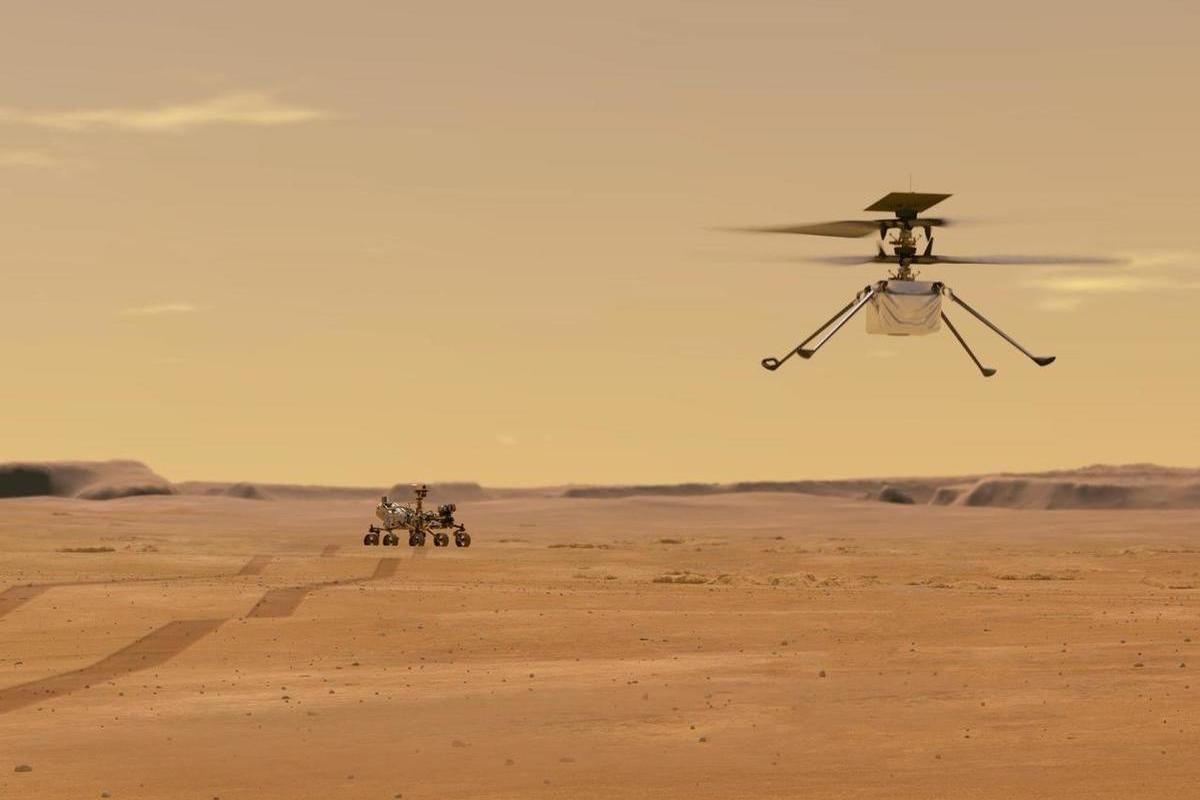Time of human flight to Mars predicted: not long to wait
[ad_1]

Mars has been a source of curiosity for decades, with no timeline set for when humans will be able to reach the red planet, writes the Daily Mail. But astronomer David Whitehouse has high hopes that this day could come in just a couple of decades.
Whitehouse has predicted that humans will go to Mars in the 2040s, and his prediction is based on the fact that upcoming exploration on the Moon will be successful.
He said he believes it will lead to a better understanding of how to survive a year-long journey to Mars.
NASA had planned to launch its Odysseus lunar module to explore the dark side of the moon early Wednesday morning, but the launch was delayed until Thursday due to abnormal methane temperatures, the Daily Mail notes.
Astronomers believe that the southern part of the Moon stores billions of gallons of ice, which is a valuable resource for space travel because the ice will provide astronauts with oxygen to breathe and water to drink.
‘So going to the Moon is valuable in itself,’ Whitehouse told Sky News, adding: ‘But Mars has ice, so what you learn on the Moon you can take that technology to Mars. The problem is that the moon is three days away, and getting there is relatively easy. Mars, the journey is a big milestone because it will take the better part of a year to get there.”
He predicted it would be at least 15 or 20 years before astronauts could travel to Mars, setting the expedition date for the 2040s.
Whitehouse said the duration of the mission to Mars is a major concern because astronomers “don’t know how to maintain life in deep space during such a long journey.”
Historically, space travel has taken no more than a few days, and the average stay on a space station lasted about six months, but there is still little information about how a year’s journey in space will affect the human body, the Daily Mail highlights.
There are three main problems associated with traveling in space for a year or more: weightlessness, radiation and isolation.
Living in zero gravity means that muscles don’t have to work the way they would on Earth, causing them to weaken and break down over time. It also causes the heart and lungs to weaken, meaning they can’t effectively pump oxygen throughout the body, and bone density drops by more than one percent per month, putting astronauts at risk of developing osteoporosis.
In 2010, the Mars500 experiment was conducted in which six people spent 520 days in a windowless cell at the Russian Institute of Biomedical Problems in Moscow to determine the psychological effects of such long periods of imprisonment. By the end of the study, most of the crew suffered from insomnia and other sleep disorders, writes the Daily Mail.
On Earth, people are protected from radiation by the atmosphere and magnetic field, but in space, astronauts face radiation levels equivalent to a year’s exposure on Earth in just one week.
The only way to protect astronauts from radiation exposure during a long mission to Mars would be to build a bulkier spacecraft or use more effective shielding materials, both of which would make launches more expensive and difficult.
To put this into perspective, each interplanetary space mission typically costs a billion dollars, meaning that major space agencies around the world have spent a total of $50 billion on Mars since NASA’s first spacecraft reached Mars in 1964 year – and this is only the cost of sending cameras, rovers and landers to the Red Planet.
Astronomers are determined to reach Mars because it is one of the few other planets in our solar system where life may have existed.
The rover has found evidence that Jezero Crater on Mars is home to an ancient river delta, but scientists recently confirmed that the crater was also once a lake bed.
Mars is between 33 million and 249 million miles from Earth, with the distance constantly changing, but NASA says it is working on six technologies to get humans to Mars by the end of the next decade.
Improved propulsion systems, inflatable landing gear to carry heavier spacecraft, and high-tech spacesuits that adapt to any climate and have increased mobility. This also includes creating a home and laboratory on wheels that can navigate terrain for astronauts to conduct experiments and allow astronauts to survive on another planet, as well as ground-based power systems that will continue to operate regardless of location or weather.
There is currently no way to establish direct lines of communication with astronauts traveling beyond the Moon, so NASA’s laser communications system will allow astronauts to stay in touch with people on Earth and send more data at a time. NASA said it plans to test all technologies on the Moon before sending humans to Mars, and hopes that studying the Red Planet “will tell us more about our Earth’s past and future and may help answer the question of whether life exists beyond our home planet.” ‘.
[ad_2]
Source link








